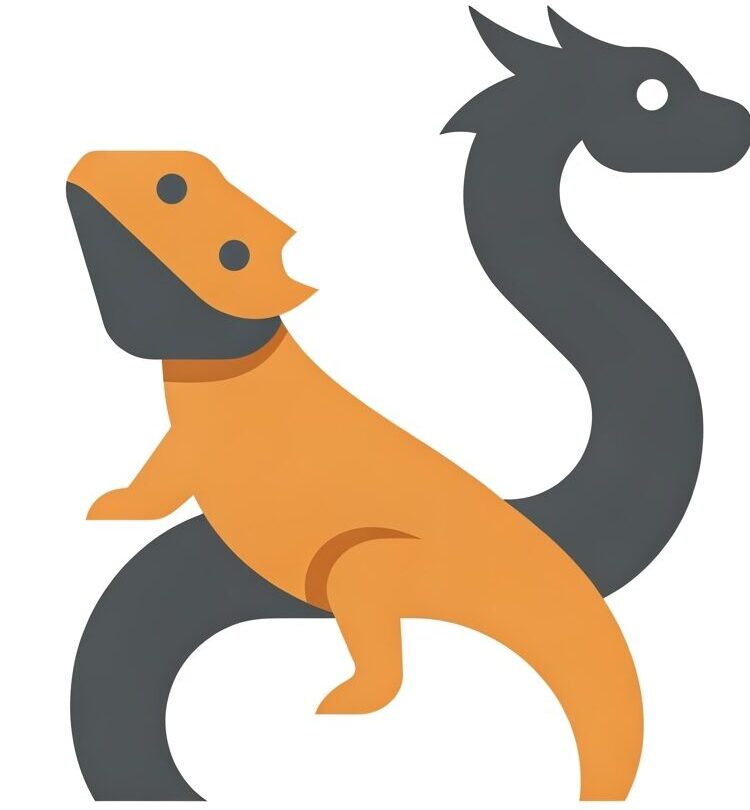Ideal Warm Side Ambient Temperature for Bearded Dragon: Setup & Guide
Maintaining the correct Warm Side Ambient Temperature is vital for your bearded dragon’s health and well-being. This article will guide you through the ideal temperature range, why it’s important, how to achieve it, and potential problems if it’s incorrect.
The Ideal Warm Side Ambient Temperature Range
The ideal Warm Side Ambient Temperature for a bearded dragon should be between 88-95°F (31-35°C). This temperature should be measured on the warm side of the enclosure, away from the basking spot directly under the basking lamp. We will also delve into basking temps in other posts, so keep an eye out for those!
Why is This Parameter Important?
Bearded dragons are ectothermic (cold-blooded), meaning they rely on external heat sources to regulate their body temperature. The warm side ambient temperature is crucial for several physiological processes:
- Digestion: Proper digestion requires adequate heat. Low temperatures can slow down or halt digestion, leading to impaction and other digestive problems.
- Activity Levels: Bearded dragons are most active and alert when their body temperature is within the optimal range. A cooler temperature can cause lethargy and decreased appetite.
- Immune Function: A proper temperature range is essential for maintaining a healthy immune system. When their body temperature is too low, their immune system can be compromised, making them more susceptible to infections.
- Shedding: Optimal temperatures aid in proper shedding. Too cool, and shedding can become difficult and incomplete, potentially leading to stuck shed.
How to Achieve and Measure
Achieving the ideal warm side ambient temperature requires proper equipment and monitoring:
- Heat Lamps: Use a ceramic heat emitter (CHE) or a reptile basking bulb to provide heat. Avoid heat rocks, as they can cause burns. The wattage of the bulb will depend on the size of the enclosure and the ambient room temperature.
- Placement: Position the heat lamp on one side of the enclosure to create a temperature gradient. This allows the bearded dragon to move between warmer and cooler areas as needed.
- Thermostat: A thermostat is essential to regulate the heat lamp and prevent overheating. Use a dimming or on/off thermostat for best results.
- Thermometer: Use a digital thermometer with a probe to accurately measure the warm side ambient temperature. Place the probe on the substrate or on a branch within the desired temperature range to get an accurate reading. Avoid using stick-on thermometers as they are often inaccurate.
- UVB Lighting: Though not directly related to the ambient temperature, UVB lighting is essential for vitamin D3 synthesis, which is crucial for calcium absorption. Provide a UVB bulb that emits UVB rays within the recommended range for bearded dragons. Follow manufacturer instructions for distance and replacement intervals.
- Substrate: Choose a substrate that retains heat well, such as tile, reptile carpet, or a bioactive substrate mix. Avoid sand, as it can be ingested and cause impaction.
Common Problems if Incorrect
Incorrect warm side ambient temperatures can lead to several health problems:
- Impaction: Low temperatures can slow digestion, increasing the risk of impaction, especially if the bearded dragon ingests substrate.
- Respiratory Infections: Prolonged exposure to excessively low temperatures can weaken the immune system, making the bearded dragon more susceptible to respiratory infections. Symptoms can include lethargy, sneezing, and discharge from the nose or mouth.
- Lethargy and Decreased Appetite: Lower temperatures can cause a general decrease in activity and appetite, leading to weight loss and other health issues.
Conclusion
Maintaining the correct warm side ambient temperature is essential for a healthy and thriving bearded dragon. By carefully monitoring and adjusting the enclosure setup, you can ensure your pet has the ideal environment for proper digestion, activity, and overall well-being. Regular temperature checks are key to preventing health problems and ensuring your bearded dragon lives a long and happy life.
